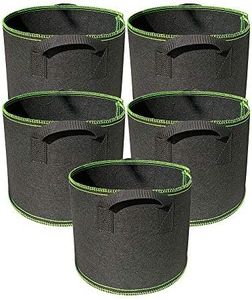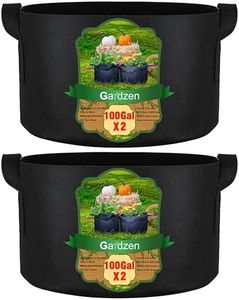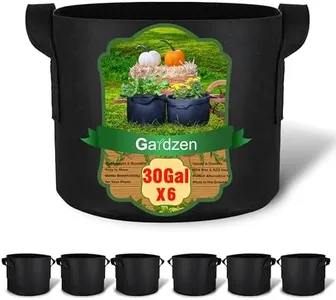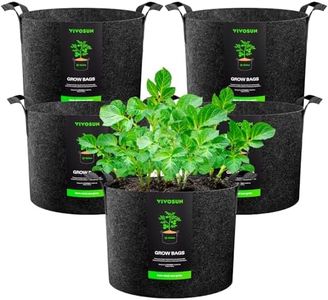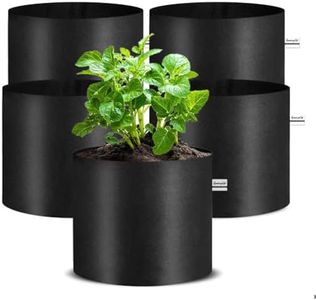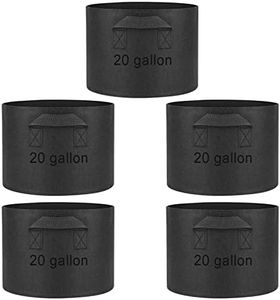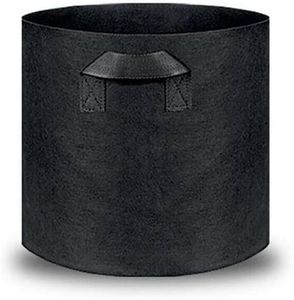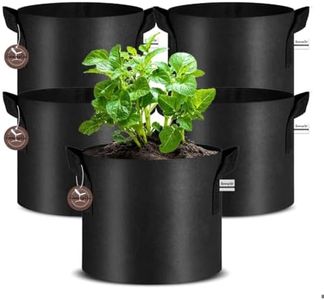We Use CookiesWe use cookies to enhance the security, performance,
functionality and for analytical and promotional activities. By continuing to browse this site you
are agreeing to our privacy policy
10 Best Grow Bags
From leading brands and best sellers available on the web.Buying Guide for the Best Grow Bags
Choosing the right grow bag is an important step for anyone interested in container gardening, whether you’re growing a few herbs on a sunny balcony or tending to vegetables in a small yard. Grow bags are a portable, flexible, and space-saving alternative to traditional pots. However, not all grow bags are made the same, so understanding the main features will help you select the best option for your particular plants, space, and gardening habits.Size/CapacityThe size or capacity of a grow bag, usually measured in gallons or liters, determines how much soil and root space your plants will have. Smaller bags (1-3 gallons) are suited for herbs and small flowers, medium sizes (5-10 gallons) fit peppers, lettuces, and compact plants, while larger ones (15-30+ gallons) are needed for big plants like tomatoes, potatoes, or multiple plants together. Always consider both the mature size of the plants and the available space you have; choosing the right size helps ensure healthy root growth and less frequent watering.
Material QualityGrow bags are typically made from fabric or sometimes plastic. The material quality affects aeration, drainage, durability, and how reusable they are. Thicker, nonwoven fabrics are usually better because they are sturdy, washable, and promote 'air-pruning,' which helps roots grow healthier. Thin or low-quality materials may tear or degrade quickly. Choose a material that balances good drainage and sturdiness; if you plan for multiple seasons or heavy plants, sturdier fabric is preferable.
DrainageProper drainage is essential in a grow bag to prevent water from pooling and harming plant roots. Most fabric grow bags naturally drain well, but the construction and thickness can still affect this. Check how easily the water escapes and whether the bag’s bottom is reinforced so it won’t leak soil. If you tend to overwater or grow moisture-sensitive plants, better drainage is beneficial, while drier climates or thirsty plants might want a bag that retains a bit more moisture.
HandlesHandles on grow bags make moving your plants around easier, which is especially useful for heavy or large bags. Some handles are simply sewn onto the sides, while others are reinforced for extra strength. If you know you’ll need to lift or rearrange your bags often, sturdy, well-stitched handles are important; for stationary containers, this is less critical.
Reusability & CleaningGrow bags intended for reuse should be easy to wash and durable enough to withstand multiple planting seasons. Fabric bags can often be folded and stored, but some materials are prone to mildew or tearing after use. If you plan to garden regularly or with different plants each season, pick bags labeled as machine-washable or that show good resistance to wear and weather.
BreathabilityBreathability describes how well air can move through the bag material. Good airflow encourages healthy root systems and stimulates better plant growth by preventing ‘root circling’ and reducing the risk of overwatering. Fabric bags usually provide excellent breathability, but some plastic or coated bags do not. If your main goal is strong root growth and healthier plants, prioritize high breathability in your selection.
